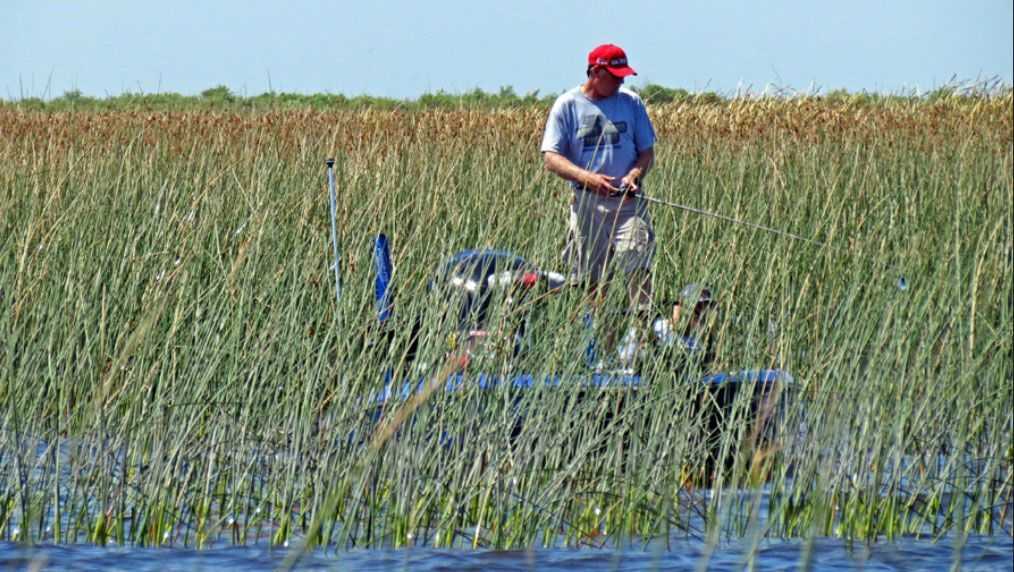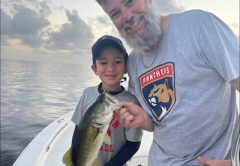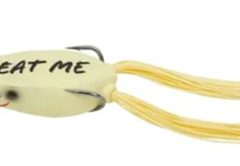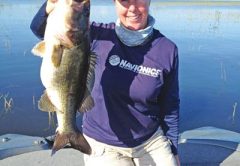In our March issue we introduced four basic zones for aquatic vegetation. They were; the emergent zone, the floating leafed zone, the submersion zone, and the free-floating zone. To be productive at fishing you need to know when these zones are active and what techniques produce consistent results. This month we take on the emergent zone, the area starting at the shoreline.
The emergent zone is by far the most popular area to fish for bass in Florida. This area also provides much frustration due to frequent fish movements in and out of this zone as well as the wear and tear on our gear.
PLANTS GENERALLY ASSOCIATED WITH THE EMERGENT ZONE INCLUDE CATTAIL, BULRUSH, REEDS, MAIDEN CANE, PICKERELWEED, ARROWHEADS, AND VARIOUS GRASSES.
Plants generally associated with this zone include cattail, bulrush, reeds, maiden cane, pickerelweed, arrowheads, and various grasses. Emergent zone plants are rooted in the lake’s bottom with a portion of the plant growing below the waterline and a portion above the water line. Learning how to identify the different species of plants will help you fish these areas more effectively and guide you on what baits and techniques to use. A great intro to Florida’s aquatic plants is a report from the University of Florida titled, Common Aquatic Plants of Lake Okeechobee: Identification, Value, and Management, which can be downloaded from University of Florida IFAS Extension here. The guide is about the plants, not the fishing.
Cattails tend to grow in very shallow water, say 1 to 3 feet, and have very dense root systems. They make up a large portion of the local shoreline.
Cattails can be distinguished by their cigar shaped flower that grows at the tip of the plant and their semi-circular stem cross section. They tend to favor heavy sedimented bottoms. One of the key parameters impacting fish in shallow water is the level of oxygen within the water. Since cattail root structures are densely packed, there is a low rate of water exchange within the patch and this can lead to low oxygen levels which will drive bass out. Such conditions are commonly seen during the fall and winter months when the plants turn brown and begin to decay. This turns the plant from an oxygen producer to an oxygen consumer. Other times when this condition appears is during long periods of low light, such as consecutive cloudy days, and stagnant weather. During these periods, less light enters the water column which leads to low or no oxygen production and the bass will move out. Fortunately the bass don’t move far, they’ll stage themselves just outside the cattail patch in deeper water, so in these conditions start fishing from the outside and work your way in. The time of day also plays an important roll as to when to fish these areas. When oxygen levels are low, fish the cattails after sunlight has had a chance to entered the water column and give the plants a chance to produce the oxygen necessary to retain the bass. For the best results in the shallows, look for areas where there is a mixture of vegetation. These generally mark transition points from shallow to deeper water and the fish will use these to move in and out of the shallows. Since a cattail patch can be very dense, it can be very difficult to penetrate the heart of the patch so pitching and flipping to the edges and deeper pockets will be the most productive. Weedless spinner baits are also very effective in this environment. Selection of line can be critical in fishing this zone. Most fishermen prefer heavy braided line to withstand the physicality of the environment. Those who choose monofilament lines need to pay close attention to nicks and scraps and trim back damaged areas of line.
ONE THING YOU WANT TO REMEMBER IS TO LET YOUR BAIT SETTLE TO THE BOTTOM BEFORE YOUR RETRIEVE. FISH VERTICALLY AND HORIZONTALLY.
Bulrush and the other hand tends to grow in deeper water, say 3 to 6 feet, and has a more open root system than cattails. The flowers on Bulrush appear as small clusters and the stalks are more circular in shape than cattails. Bulrush is the primary plant making up the ‘walls’ which Lake Okeechobee is famous for. Here bass tend to reside year round due to; stable oxygen levels associated with water flushing through the open root systems, the ability of the bass to access deeper water, and an abundant food supply. The best times to fish bulrush is during pre-spawn and the post spawn staging periods.
Being in deeper water, bulrush is usually the first breakline an open water bass will encounter on its way to the spawning beds so naturally they will move in and out of these areas. Then after the spawn, bass will move back into the bulrush to rest and feed. This post spawn period can be very exciting times. As for how to fish bulrush, weedless lures, soft plastics, and jigs work best, but with the deeper water and less congested root systems, add a little weight to your presentation to get it lower into the water column. If you add weight be sure to use a bobber stop or some type of wedge to keep you weight with the bait. No slippage needed here. One thing you want to remember is to let your bait settle to the bottom before your retrieve. Fish vertically, not horizontally. With the deeper water comes the ability to use crankbaits. Cast these along the outside edges and along the points. Top water can be very effective though it can be quite seasonal. As for line selection, it’s the same as in the cattails, braided line for brute strength and longevity versus mono for cost effectiveness.
Pencil reeds and arrowheads are another emergent plant of interest to local fishermen. Whereas cattails and bulrush form thick dense stands, pencil reeds and arrowheads cluster in smaller patches. They are also generally associated with a harder bottom which provides cleaner water conditions which bass tend to favor. These areas are most active from January to March when bass use them as pre-spawn staging areas. Bait selection is very similar to that of the bulrush.
Whether you are fishing cattails, bulrush, or any other form of vegetation, one very important component to consider is underwater structure. By structure we mean the bottom contours of the lake, channel, or trail. It’s the section of the bottom the fish use to guide their movements and migrations. Fish just don’t meander around the lake or the trails of the Monkey Box, they use specific structural guidelines to move in and out of the shallows. Learn to locate these and you’ll tap into the secrets of fishing the emergent zone. Otherwise you are just pitching to the weeds.
To rap this up, the emergent zone is probably the most productive zone to fish in Florida lakes and one of the most difficult to master. Here fish are on the move and the shallower the water the more they move. One day you’ll pull a nice 6-lber from a cattail bed and the next day you won’t have a look. The fish move for a reason, whether to breed, find cleaner water, more oxygen, or more food, and they move guided by the lake’s structure.








